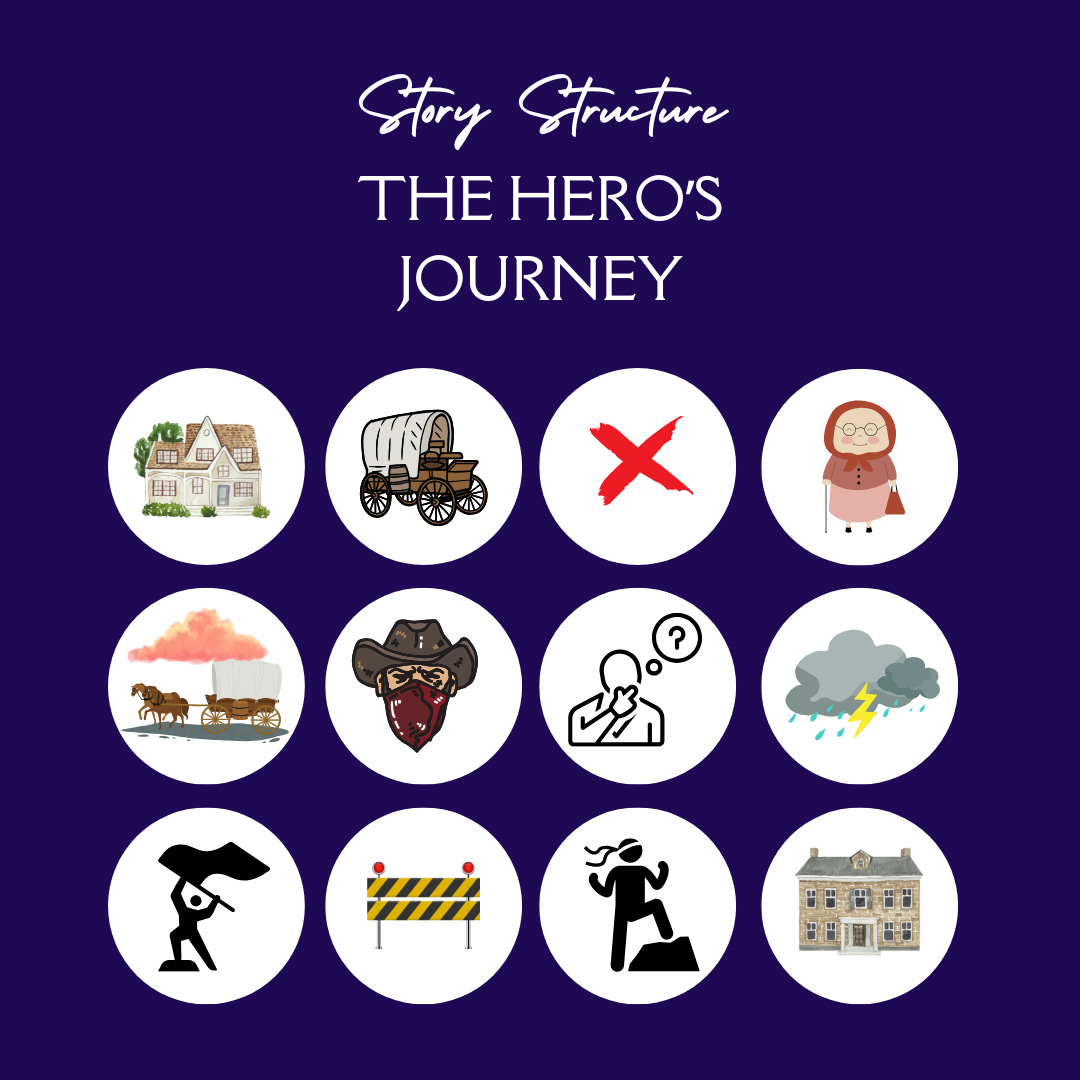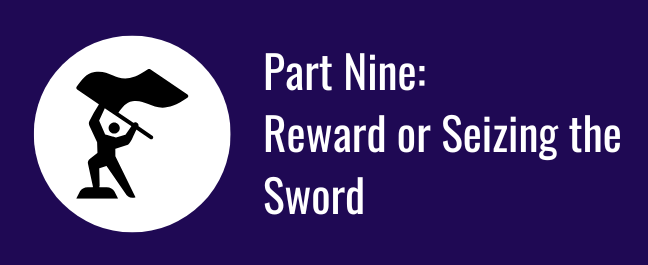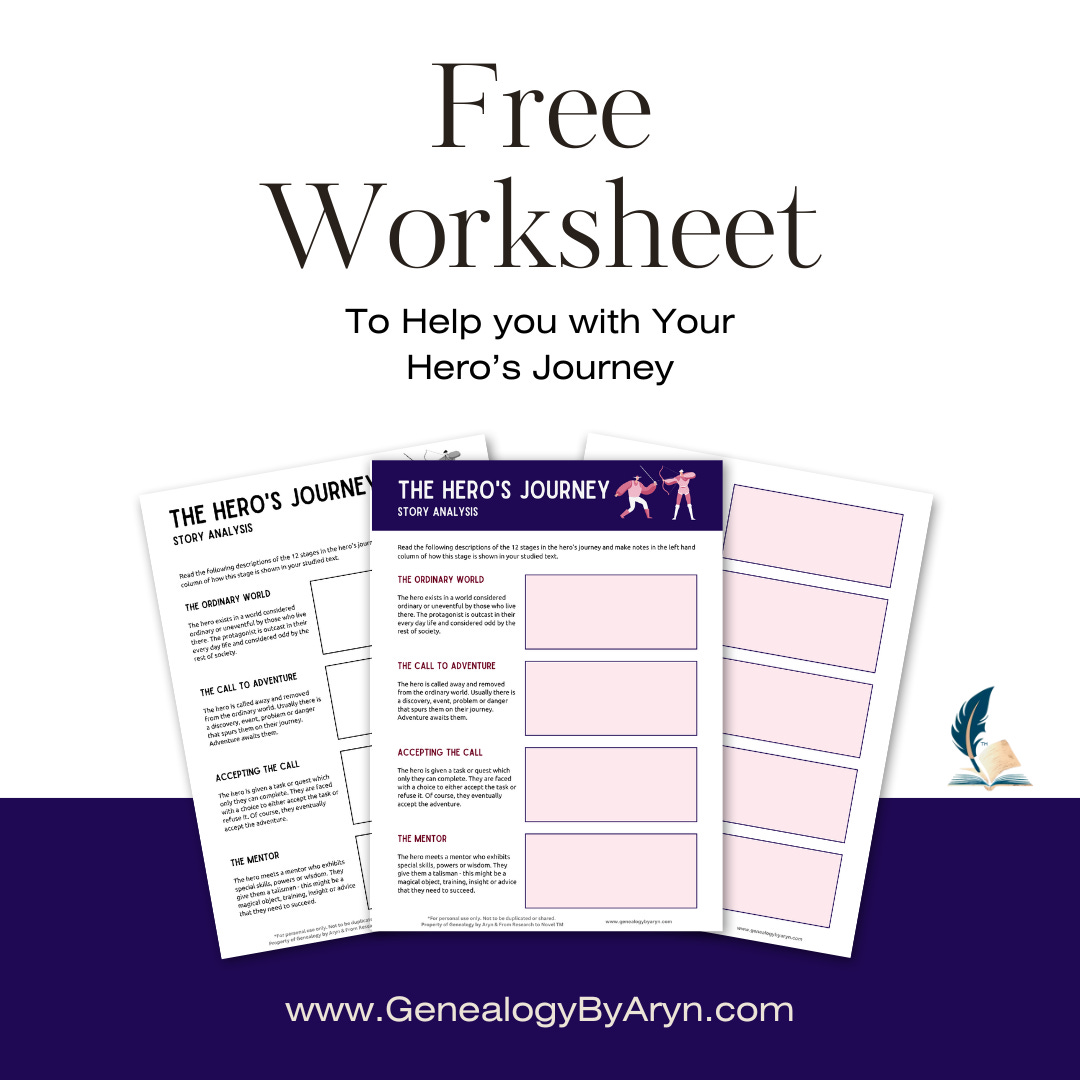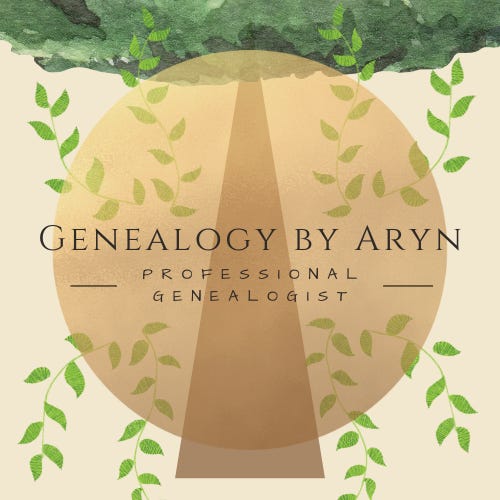I have already spoken about The Three Act Structure, but there are many other styles of storytelling structures out there in the landscape of storytelling techniques. Today, I will be discussing one known as The Hero’s Journey. Few frameworks have proven as enduring and universal as the Hero's Journey, and if you don’t learn about it before the Third Act Structure, you will hear about it soon after.
Coined by mythologist Joseph Campbell in his groundbreaking 1949 work "The Hero with a Thousand Faces," (a recommended read) this storytelling pattern has influenced countless narratives across cultures, mediums, and generations. I guarantee you have enjoyed a book, film, or wanted a television show that has used or played on aspects of the Hero’s Journey.
This is why it can make a perfect structure for writing your family history as creative nonfiction or adapting it as a historical fiction novel. Nothing says family history like “myth.”
Aryn is a dedicated genealogist and researcher passionate about uncovering family history and social history. She helps people connect with their heritage and explore historical narratives that shape their identities. Aryn also assists clients in using their research to craft engaging nonfiction and historical stories about their ancestors and other figures. To learn more about this Substack and my love of history, family history, and genealogy — head here! To learn more about the From Research To Novel webinar and Substack — head here.
The Power of Mythic Structure
Campbell's genius was in recognizing that beneath the surface differences of myths from around the world lay a common structure—a monomyth, or a hero’s journey, that resonates deeply with the human experience.
From ancient epics like Gilgamesh to modern blockbusters like Star Wars and The Wizard of OZ, the Hero's Journey provides a blueprint for stories that captivate our imaginations and speak to our shared humanity. Time and time again, it resonates with universal human experiences and offers a compelling way to explore themes of transformation, self-discovery, and the search for meaning.
Remember, it's not just about slaying dragons (when your ancestor stood up to his boss and stood on a picket line) or saving kingdoms (the establishment of the Fair Labor Standards Act (FLSA) of 1938, which essentially ended child labor in the United States)—it's about the internal journey of growth, self-discovery, and return with new wisdom.
For story writing purposes–it happens in stages.
What are the Stages of the Hero's Journey?
While Campbell's original model included 17 stages, do not fret!! Most modern storytellers work with a simplified version. So, let's explore the key stages that form the backbone of this mythic structure:
This version of the Hero’s Journey has twelve parts:
The Ordinary World
Call to Action
Refusal of the Call
Meeting the Mentor
Crossing the Threshold
Tests, Allies, and Enemies
Approach to the Inmost Cave
The Ordeal
Reward or Seizing the Sword
The Road Back
Resurrection
Return with the Elixir
Below, I break each part down one by one, with an example to help better visualize what it may look like when you drop your family history into the plot structure.
And here we go!!
Every hero begins somewhere familiar. This establishes the character's normal life before adventure calls—their comfort zone, their limitations, and the status quo that will eventually be challenged. Think of an ancestor who was born and raised in Boston, but hopped on a covered wagon with their family as part of Westward Expansion. The ordinary world would be Boston, before the left to endure the trials and hazards of the Oregon Trail.
Something disrupts the ordinary world—a threat, an invitation, a revelation. This catalyst forces the hero to confront the prospect of change and presents the story's central question or challenge.
In the scenario above, that “Call to Action” would most likely be related to the promise of free or cheap land, the allure of economic opportunities like mining and farming, and the belief in Manifest Destiny. It’s the moment that gets them out of their Greek Revival or Colonial style home in Boston and inside the covered wagon heading west.
Initially, many heroes resist the journey ahead. This reluctance is natural and makes characters relatable—change is frightening, and the unknown path ahead is filled with danger. Think of Luke Skywalker initially refusing Obi-Wan's invitation to learn the ways of the Force or how Dorothy didn’t initially want to go to OZ.
With our fictitious family living in Boston, the Refusal of the Call may look like a spouse saying it was a “Bad Idea” because of all the unknown, or maybe even a friend or relative giving examples of the people who tried to go west, but failed. These beats will give your Hero pause. Are they making the right decision? Will the west be better?
A wise figure—often an elder, teacher, or guide—appears to provide advice, tools, or confidence. The mentor helps prepare the hero for the journey but cannot take the journey for them.
Like Obi-Wan or Glinda the Good Witch, the Mentor will appear when they are needed the most. Possibly, after the Call takes place, your Hero goes for a walk, grabs a pint at a local pub, or maybe their grandmother shows up unannounced to say, “but what if it’s amazing? Here, let me help you gather the things you need to successfully head to Oregon.”
The hero finally commits to the adventure and leaves the ordinary world behind. This is the point of no return, where they step into the unknown and the story truly begins.
So, the journey begins. After taking the Mentor’s advice, our Hero (and their family) finally board the covered wagon, and head off into the sunset – without knowing if the Mentor’s advice was sound or not. They do it anyway.
In this new world, the hero faces challenges that test their resolve, meets companions who aid their quest, and confronts opponents who stand in their way. This stage develops both the character and the world they've entered.
Be it from the computer game The Oregon Trail or the countless films and books about the subject, we all know the path was not the easiest. Perhaps you have letters, diaries or wills that elaborate what your ancestor endured along the path, or maybe you don't have access to anything like that. Still, the journey from Massachusetts to Oregon would have been arduous. Taking time to research available oral histories or by reading or listening to books on the topic will help you flesh out what it may have been like along your ancestors journey west.
The hero prepares for the central ordeal, often facing increasing danger and more significant challenges. This is the journey to the heart of the story—the dragon's den, the enemy's fortress, or the darkest part of their own psyche.
Perhaps your ancestor encountered one of the many lawless men or gangs along the trail and those thieves and robbers threatened violence or murder if your ancestor did not comply? Or, perhaps, it was nature that was the biggest foe of your relative. When we reach the Inmost Cave we sit with your Hero as they decide what they can and cannot endure. What measures they were willing to go to ensure that they would in fact arrive in Oregon, as unscathed as possible.
At the story's midpoint comes the central crisis—a confrontation with the hero's greatest fear, a powerful adversary, or a profound inner conflict. This is where the hero faces death (literally or metaphorically) and must summon their deepest resources to survive.
Be it a monumental storm or an attack by a band of thieves, The Ordeal is when the Hero cannot avoid the danger they are standing in the path of, they must face it.
Having survived the ordeal, the hero claims the prize—an object, knowledge, reconciliation, or self-realization.
They have defeated the foe—the storm or the bandits, but the journey isn't over yet.
The hero begins the return to the ordinary world, or in our case, their new home in Oregon. Often they are still pursued by remaining forces of antagonism. This stage tests whether they can integrate their new knowledge or power with their former life.
They survived an ordeal which transforms them into a stronger and bigger version of the person they were at the beginning of their journey. Now, when thinking back to the refusal of the call moment, they wouldn't hesitate to move forwards. They have become wise enough to be their own mentor.
Before truly returning to a state of calm, the Hero faces a final test—a last, desperate challenge that requires everything they've learned. This is their chance to demonstrate true transformation.
Be it one of the bandits unexpectedly catching up with them with their sights set on revenge or a freak tornado crossing their path–they will prove their strength and resilience.
Finally, the Hero returns to where they began, but they are forever changed. They bring back wisdom, treasure, or healing that benefits the ordinary world they left behind.
In our ongoing saga, our Hero is now settled in their new home in Oregon, every dream they had has come true, and they are the best version of themselves due to the struggles they endured along the way.
Don’t forget to give this post a like and a restack!
The Hero's Journey in Fiction & Nonfiction
This framework shines brightest in stories centered on a single personal transformation. It is most commonly found in:
Coming-of-Age Stories: Where the journey mirrors the universal experience of growing up and finding one's place in the world.
Adventure Tales: Where external challenges parallel internal growth.
Redemption Narratives: Where characters must overcome their flaws to become their better selves.
But it can also be modified to fit your family history or historical narrative by using the structure to highlight how the migration and immigration stories of your ancestors were almost fantastical. Remember, our ancestors were the heroes of their stories—the champions of their lives.
Those heroics are why we are here today, able to talk about them.
Making It Your Own!
While the Hero's Journey provides a powerful template, the most compelling stories don't simply follow it step by step. Consider these approaches to make this mythic structure serve your unique story:
Compress or expand stages. Use what best serve your narrative
Subvert expectations. Take the time to deliberately break the pattern at key moments to further intrigue and readability
Adapt the framework. No two writers write the same. It is okay to modify the Hero’s Journey to your specific genre and character needs
Focus on the internal journey. For the Hero’s Journey, the internal transformation and growth is as important as the external one
The Hero's Journey is one of many different structures used to write fiction and nonfiction stories. Yet, it endures because it speaks to something fundamental in the human experience—our capacity for growth, our need for meaning, and our belief in transformation. These three things were felt by our ancestors and will be felt by our descendants too. Those feelings are why a lot of us work on our family history in the first place. So, by understanding this mythic pattern, as writers we can craft stories that not only entertain but resonate at the deepest levels of human consciousness. We can create a deeper connection with our readers and our past.
So know that, whether you're crafting an epic fantasy saga or a quiet tale of the personal discovery of your great-great Aunt, the Hero's Journey offers a time-tested path for taking your character—your ancestors—and your readers on a journey they'll never forget.
Did you miss it?
The Three-Act Structure, Historical Fiction, and Genealogical Research
Historical fiction is a popular genre. From Taylor Jenkins Reid's The Seven Husbands of Evelyn Hugo to James Clavell's Shogun, the genre allows readers to get swept up in the past and for writers to explore historical moments in time while weaving them into compelling and engaging narratives.
Don’t forget: The Hero’s Journey Worksheet! Available here — for free!
Stay tuned for The Five Act Structure. Common in Greek Myths and used by Shakespeare – don’t forget to subscribe today so you don’t miss out!
To learn more about Genealogy by Aryn - head over to GenealogybyAryn.com, stop by and say hello on Bluesky - Instagram - Facebook - YouTube
Be sure to check out my Etsy Shop and stop by my Genealogy Shop.
Looking to learn more about writing your family history? Check out From Research to Novel!
For more information about my Genealogical Services visit GenealogyByAryn.com or email me at aryn.genealogy@gmail.com. For more information on Writing Services - visit ASYounglesAuthor.com























